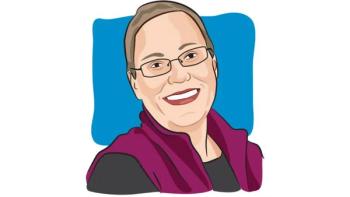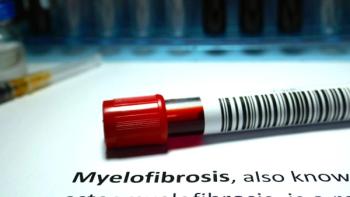
Kyprolis Shows Unprecedented Results in Delaying Disease Progression in Relapsed Myeloma
Adding the proteasome inhibitor Kyprolis (carfilzomib) after Revlimid (lenalidomide) in patients with relapsed multiple myeloma showed significant delay of disease progression.
Adding the proteasome inhibitor Kyprolis (carfilzomib) after Revlimid (lenalidomide) in patients with relapsed multiple myeloma showed unprecedented delay of disease progression in a recent study. Kyprolis was approved in 2012 for patients who had progressed after at least two lines of therapy.
Interim results from the ASPIRE phase 3 trials shows Kyprolis in combination with Revlimid and the steroid dexamethasone increased progression-free survival (PFS) by 8.7 months when compared with Revlimid and dexamethasone alone.
Keith Stewart, dean of research at the Mayo Clinic in Scottsdale, Ariz., presented the results during the 2014 annual meeting of the American Society of Hematology. Data from the ASPIRE study, which was conducted in 90 centers across 20 countries, included a total of 792 patients with relapsed multiple myeloma who were treated with Revlimid and dexamethasone, then randomized to the addition of either Kyprolis or placebo.
“The median progression-free survival with Kyprolis with Revlimid and dexamethasone is unprecedented in first-relapse myeloma at over two years,” said Stewart. Median PFS was 26.3 months in the Kyprolis arm compared with 17.6 months in the control arm. The overall response rate for the patients receiving Kyprolis was 87.1 percent with a mean time to response (TTR) of 1.6 months; the ORR for the control arm was 66.7 percent with a mean TTR of 2.3 months. In terms of complete response (CR), 31.8 percent of patients in the Kyprolis arm had a CR, compared with 9.3 percent of patients in the control arm, an increase of over three-fold. Stewart described overall survival in the Kyprolis arm as trending favorably.
The addition of Kyprolis did not increase adverse events (AEs), with almost equal percentages of patients in each arm having experienced any AE. This is notable in that treatment in the Kyprolis arm included not only a third drug, but also lasted 50 percent longer. Although serious side effects were somewhat more prevalent in the Kyprolis arm (59.7 percent) than in the control arm (53.7 percent), the number of patients discontinuing treatment due to AEs was slightly higher in the control arm than in the Kyprolis arm.
The percentage of patients discontinuing treatment due to disease progression was also higher in the control arm than in the Kyprolis arm. The percent of patients who died due to side effects were equivalent between the two groups at 7 percent. According to Stewart, no increase in peripheral neuropathy was evident compared with the control arm, and peripheral neuropathy was not a side effect of Kyprolis. He also said no significant effect in cardiac toxicity was seen, with a slight increase in the Kyprolis arm in all grades as well as in grade 3 toxicity or higher compared with the control arm; the number of cardiac-related AEs was low in both treatment arms. There were more deaths from cardiac failure in the control arm than in the Kyprolis arm (3 and 2 deaths, respectively).
“Another secondary objective worth noting is that we measured health-related quality of life for patients who participated in the trial,” Stewart said. “As can be seen on the curves, as soon as we began to measure, the patients on the three-drug combination reported better global health status that persisted throughout the 18 months of the study that they were on the drug.”
Inhibition of proteasomes helps to slow or halt the spread of multiple myeloma by targeting cellular mechanisms regulating the levels of proteins that myeloma cells require for continued growth.
Kyprolis blocks a structure that degrades unneeded proteins, thereby protecting proteins that inhibit cell division.
You can learn more about myeloma in CURE's article “





